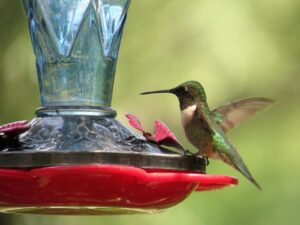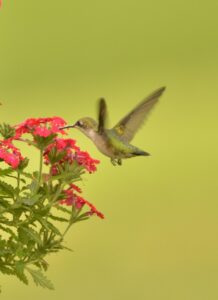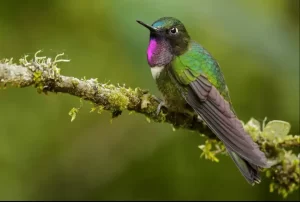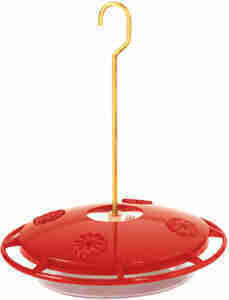Attracting hummingbirds to your garden can be a magical experience. These tiny, vibrant creatures bring life and wonder to any outdoor space. One of the best ways to invite these fascinating birds into your yard is by providing them with a nutritious nectar solution. In this guide, we’ll walk you through a simple and safe recipe for hummingbird nectar that will keep these beautiful creatures coming back time and time again. Whether you’re a seasoned bird enthusiast or just starting out, this easy-to-follow recipe will help you create the perfect hummingbird haven right in your own backyard.
What is Hummingbird Nectar?
Understanding the Basics
Hummingbird nectar is a sugar-water solution that mimics the natural nectar found in flowers that hummingbirds feed on. In the wild, hummingbirds derive their energy from the nectar of various flowering plants. However, in our gardens, we can provide a supplementary food source that helps support these tiny birds, especially during times when natural nectar may be scarce.
While natural nectar contains a complex mix of sugars, enzymes, and amino acids, homemade hummingbird nectar is a simple solution that provides the essential energy hummingbirds need. It’s crucial to understand that the nectar we provide should be safe and nutritious, closely resembling the natural nectar hummingbirds consume in the wild.

The Perfect Hummingbird Nectar Recipe
Ingredients
To make hummingbird nectar, you only need two simple ingredients:
-
1 part refined white sugar
-
4 parts water
It’s essential to use plain, refined white sugar. Avoid using honey, artificial sweeteners, or food coloring, as these can be harmful to hummingbirds. Brown sugar, molasses, and other sugar substitutes should also be avoided as they contain additional compounds that can be detrimental to hummingbird health.
Step-by-Step Instructions
-
Measure the ingredients: Use a 1:4 ratio of sugar to water. For example, 1/4 cup of sugar to 1 cup of water.
-
Mix the solution: In a clean container, combine the sugar and water. Stir until the sugar is completely dissolved.
-
Boil the mixture (optional): While not strictly necessary, boiling the mixture can help ensure all sugar is dissolved and extend the nectar’s shelf life. If you choose to boil, let the solution cool completely before use.
-
Cool and store: If you’ve boiled the mixture, allow it to cool to room temperature before filling your feeder. Store any excess nectar in the refrigerator for up to one week.
This hummingbird nectar was so good the hummingbird built her nest right on the feeder 2 years in a row!
Tips for Preparing and Serving Hummingbird Nectar
Best Practices
To ensure the health and safety of your hummingbird visitors, follow these best practices:
-
Clean feeders thoroughly with hot water before each refill. Avoid using soap, as residue can be harmful to hummingbirds.
-
Change the nectar every 3-5 days, or more frequently in hot weather to prevent fermentation and mold growth.
-
Place feeders in partially shaded areas to slow fermentation and keep the nectar fresh longer.
-
Position feeders near flowering plants to create an attractive feeding area for hummingbirds.
Common Mistakes to Avoid
Be aware of these common pitfalls when preparing and serving hummingbird nectar:
-
Using the wrong sugar-to-water ratio can make the nectar too concentrated or too dilute.
-
Adding unnecessary ingredients like red food coloring or honey can be harmful to hummingbirds.
-
Neglecting feeder maintenance can lead to the growth of harmful bacteria or mold.
| Good Practices | Bad Practices |
|---|---|
| Use a 1:4 sugar-to-water ratio. This ratio most resembles the nectar found in nature | Using honey or artificial sweeteners |
| Clean feeders regularly | Neglect feeder maintenance and mold will grow |
| Change nectar every 3-5 days | Leave old nectar in feeders |
| Place feeders in partial shade | Placing feeders in the sun will cause the nectar to go bad sooner |
Benefits of Homemade Hummingbird Nectar
Why Make Your Own?
Creating your own hummingbird nectar offers several advantages:
-
Cost-effectiveness: Homemade nectar is significantly cheaper than store-bought alternatives.
-
Control over ingredients: You know exactly what goes into your nectar, ensuring it’s safe for hummingbirds.
-
Freshness and quality: By making small batches, you can provide the freshest nectar possible.
Impact on Hummingbird Health
Homemade nectar, when prepared correctly, can have a positive impact on hummingbird health:
-
It provides the necessary energy hummingbirds need for their high-metabolism lifestyle.
-
By avoiding harmful additives, you ensure the nectar is safe for consumption.
-
Proper feeding supports hummingbirds during migration seasons when they need extra energy.
Frequently Asked Questions
1. How often should I change the nectar?
Change the nectar every 3-5 days, or more frequently in hot weather, to prevent fermentation and mold growth. Always discard old nectar and clean the feeder before refilling. In springtime when temperatures are cool, your nectar will last quite a while before needing to be changed. On the other hand, once summer gets here and the temperatures get into the 90’s, you will have to change the nectar every day to make sure it stays fresh and doesn’t cause your feeder to get moldy.
Hummingbirds wont come to a feeder that doesn’t have fresh nectar and a moldy feeder can be extremely hard to clean. So, replacing your hummingbird nectar when it should be replaced, will save you a lot of time and trouble in the long run.
Guide for when to change the nectar
Letting the nectar ferment encourages mold growth, which makes the cleaning process more difficult. To avoid this, follow the chart below for recommended nectar changes based on the temperature. The hotter it gets, the more frequently you’ll need to replace the nectar.
High temperatures…………Change after
71-75……………………………6 days
76-80……………………………5 days
81-84……………………………4 days
85-88……………………………3 days
89-92……………………………2 days
93+………………………………change daily
Click on the link for a detailed guide to help you clean your hummingbird feeder, especially when mold starts to grow due to nectar not being changed in time.
2. Can I use brown sugar or honey instead of white sugar?

No, stick to plain white sugar. Brown sugar and honey can be harmful to hummingbirds and should be avoided. These alternatives contain additional compounds that hummingbirds can’t digest properly.
3. Do I need to boil the water for hummingbird nectar?
While not always necessary, boiling can help the sugar dissolve more easily and extend the nectar’s shelf life. If you use boiled water, make sure to cool the nectar completely before filling your feeder.
This guide will explore the pros and cons of boiling your hummingbird food recipe. By the end, you’ll be able to make an informed decision, based on your own situation, that ensures these tiny, vibrant visitors keep coming back to your garden.
4. How do I keep the ants and bees out of my hummingbird nectar?
Now that you know how to make your own hummingbird nectar, you might want to get a good feeder that is easy to take apart and clean. This feeder will also protect your nectar from bees ants and wasps.
My favorite choice of hummingbird feeders to use is the Aspects 12oz Hummzinger Ultra With Nectar Guard
The HummZinger has patented Nectar guard tips which are flexible membranes attached to the feed ports. They prohibit entry from flying insects, but allow Hummingbirds to feed as usual. The HummZinger also has a built in ant moat that will stop crawling insects from getting to the nectar. It also has raised flower ports that divert rain.
This mid-size nectar feeder has a 12 oz. capacity and can be hung or post mounted with hardware provided. It has four feeding ports for hummingbirds and is made of unbreakable polycarbonate.
For ease of cleaning and protection from bees, wasps and ants, make this feeder a great choice.
5. What if I already have a hummingbird feeder and want to keep the ants and bees out of the nectar?
 Here’s a comprehensive article that will tell you how to keep ants and bees away from your hummingbird nectar.
Here’s a comprehensive article that will tell you how to keep ants and bees away from your hummingbird nectar.
If you already have a hummingbird feeder that doesn’t have an ant moat built in, you can simply add an ant moat between the hanger and the feeder.
Click here if you need to buy an ant moat.
This is the first and still the best ant moat to protect your Hummingbird and Oriole feeder from ants and other crawling insects. Insert between hanger and feeder and fill with water. It will provide a barrier to keep crawling pests out of your nectar. It is also red in color to attract hummingbirds.
Ant Moats are a simple and inexpensive way to keep ants out of your hummingbird feeders while also providing water to other wildlife in your yard.
Conclusion
Creating your own hummingbird nectar is a simple and rewarding way to attract these fascinating birds to your garden. By following this easy recipe and adhering to best practices, you’ll provide a safe and nutritious food source for hummingbirds. Remember to maintain clean feeders and enjoy the vibrant presence of these tiny visitors in your outdoor space. With a little effort, you can create a welcoming environment that will keep hummingbirds returning to your garden year after year, bringing joy and wonder with each visit.
Here are a few good resources for making hummingbird nectar:
-
National Audubon Society (https://www.audubon.org/news/how-make-hummingbird-nectar): Provides the recommended 4:1 water-to-sugar ratio recipe endorsed by bird experts.
-
Smithsonian’s National Zoo (https://nationalzoo.si.edu/migratory-birds/hummingbird-nectar-recipe): Offers a simple recipe and tips from bird ecologists and nutritionists.
-
The Spruce (https://www.thespruce.com/hummingbird-nectar-recipe-386573): Provides detailed instructions and additional tips for making and maintaining hummingbird nectar.
-
Birds & Blooms (https://www.birdsandblooms.com/birding/attracting-hummingbirds/hummingbird-nectar-recipe/): Offers a comprehensive guide on making nectar, including tips on feeder maintenance and complementary gardening practices.
These resources consistently recommend using a 4:1 water-to-sugar ratio, avoiding red food coloring, and emphasize the importance of proper feeder cleaning and maintenance for hummingbird health.
If you found this article helpful please share it with your friends using the social bookmarking buttons on the left side of this page. Help everyone to increase their knowledge and enjoyment of feeding hummingbirds. Do it for the hummingbirds! It also helps my ranking so my information will be available to more people. The more people that see this vital information, the more the hummingbirds are helped. Thank for your help. The hummingbirds and I appreciate you very much!

